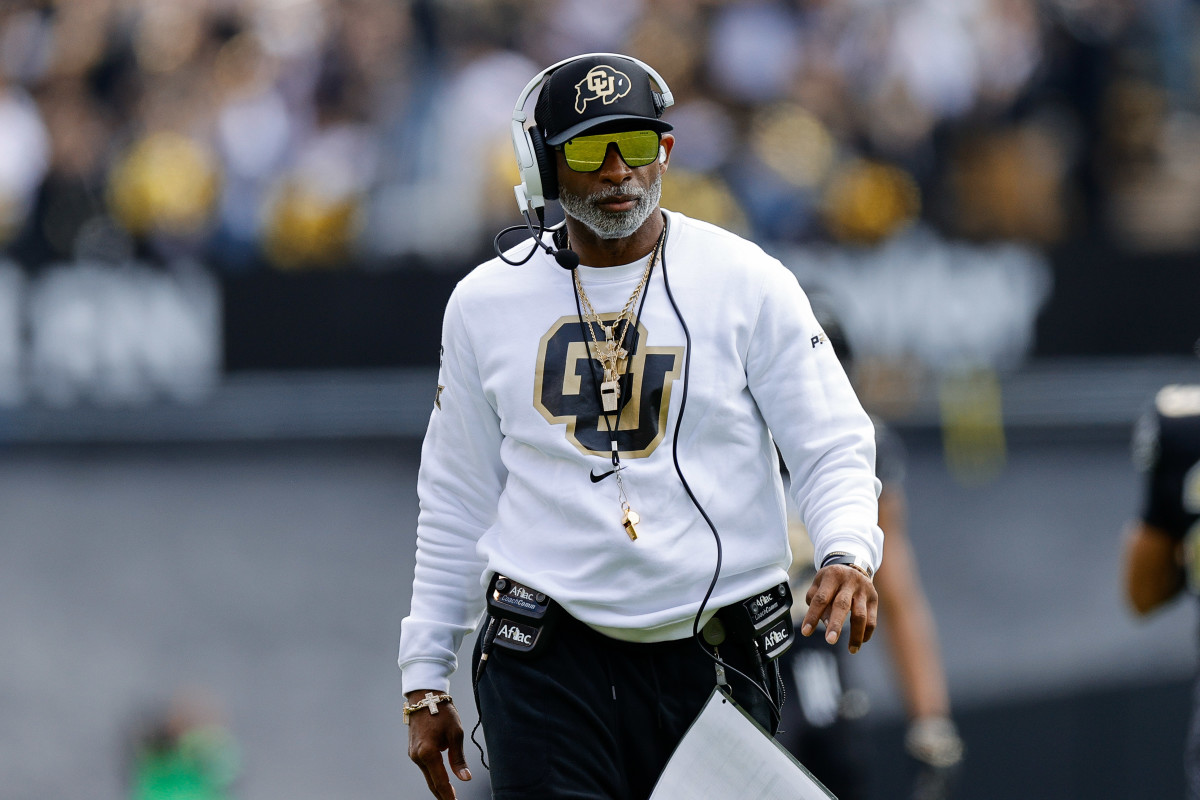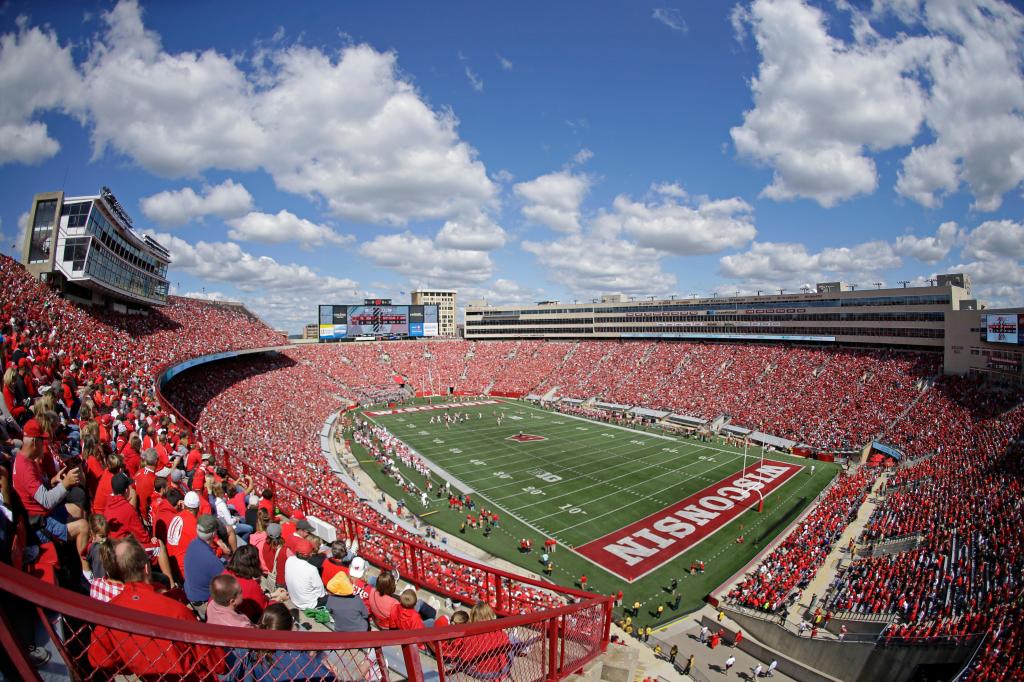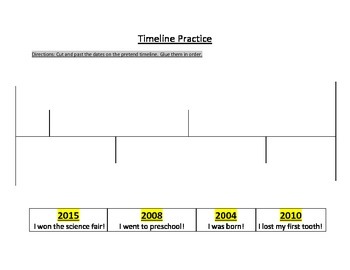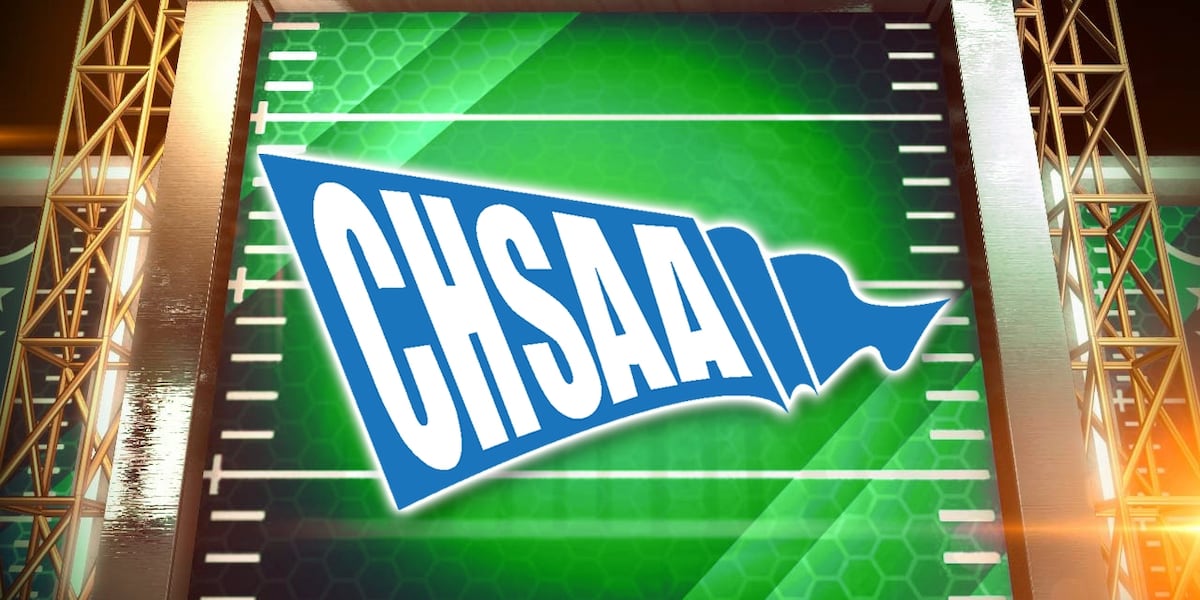Michael Cohen
College Football and College Basketball Writer
Three days after the approved multibillion-dollar legal settlement forever changed the landscape of collegiate athletics, ushering in a bold new world of revenue sharing between schools and athletes, a handful of the industry’s power brokers discussed the seismic paradigm shift on a virtual news conference.
And while they were short on details regarding the implementation and enforcement of new NIL rules overseen by the College Sports Commission, a freshly formed regulatory body created in response to the House v. NCAA lawsuit, all five conference commissioners spoke enthusiastically about the redirected path of collegiate athletics toward modernization and what they hope will be a much-needed dose of industry-wide stability.
“The decision on Friday is a significant step forward toward building long-term stability for college sports while protecting the system from bad actors seeking to exploit confusion and uncertainty,” SEC commissioner Greg Sankey said. “We know this transition will not be without challenges, and growing pains can be expected. Any time you go through change at this level, a historic and monumental level, you can expect both challenges, growing pains, along with the opportunities that have now been introduced.”
Sankey was joined on the Zoom call by fellow commissioners Tony Petitti (Big Ten), Brett Yormark (Big 12), Jim Phillips (ACC) and Teresa Gould (Pac-12) for a conversation with reporters about the next steps following judge Claudia Wilken’s approval of the deal late on Friday evening. The settlement, which now allows schools to pay players directly, goes into effect on July 1.
Here’s a breakdown of what was said and some additional context to each question asked:
On whether conferences will provide guidance to member institutions regarding how much money should be distributed to specific sports:

Big Ten Commissioner Tony Petitti watches from the sideline during the Ohio State vs. Notre Dame College Football Playoff National Championship game. (Photo by Joe Robbins/Icon Sportswire via Getty Images)
Context: Ever since the settlement’s broad strokes were first revealed, conversations surrounding payout strategies and potential disbursement requirements have been popular topics of conversation. Would schools be required to evenly distribute their respective revenue-share pies among all sports, even if football and men’s basketball serve as the primary moneymakers for most athletic departments? Would Title IX implications mandate an equal split between men’s and women’s sports? And if the answers to both the aforementioned questions are “no,” which seems to be the case thus far — though additional litigation is almost certainly forthcoming on those fronts — how drastically will the scale tilt toward football?
Without any legislative guidance for the schools, early reports have suggested that most athletic departments will allocate approximately 75% of the annual $20.5 million cap to football, 15% to men’s basketball, 5% to women’s basketball and 5% to all other sports. The commissioners were asked on Monday if their respective conferences plan to implement any league-wide mandates on the percentages distributed to each sport.
Jim Phillips, ACC: “Jurisdiction will be local campus decisions. We’ve talked a little bit about individual sports, but we certainly haven’t set exact percentages on any of our sports just yet. I think everyone has seen the commitment to football and men’s and women’s basketball, but I know for all five of us, no one is forgetting about the Olympic sports and continuing to make sure that we invest at a high level for all of our sports.”
Tony Petitti, Big Ten: “In the Big Ten, we’re focused on local decision-making. We’ve had numerous conversations about the way to address the question you’re raising and the decision was made fairly early on that we’d be in a local decision-making [situation]. So that’s where we are, giving our institutions discretion. And they want that discretion. That was the feedback from our athletics directors.”
Greg Sankey, SEC: “We took a deep look as a league in February, put that on hold, and so [we] do not have a conference-level directive on percent allocations by sport.”
Brett Yormark, Big 12: “It is a campus decision. We’ve discussed it directionally, but it is a campus decision.”
Teresa Gould, Pac-12: “I think the Pac-12 is uniquely situated because we have the opportunity with all the changing landscape around us to actually launch a brand-new league. So, while there certainly will be institutional autonomy related to strategy around revenue sharing, we are having quite a bit of conversation about what makes sense in terms of the best overall interests of the conference, and how that positions us to compete at the highest level.”
On the selection of Bryan Seeley to become CEO of the College Sports Commission:

SEC commissioner Greg Sankey talks with LSU football head coach Brian Kelly before the Kinder’s Texas Bowl. (Photo by Gus Stark/LSU/University Images via Getty Images)
Context: Within a few hours of the settlement’s approval on Friday night, the College Sports Commission announced Bryan Seeley as the organization’s first CEO. Seeley, 46, will join the organization after serving as executive vice president, legal & operations for Major League Baseball, where he “oversaw investigations into a wide range of issues including circumvention of international compensation caps and developed and enforced rules in evolving policy areas such as legalized sports betting,” according to a press release. He worked previously as an assistant U.S. attorney in Washington, D.C., for eight years.
As the leader of this new enforcement arm, Seeley is tasked with building out “the organization’s investigative and enforcement teams and [overseeing] all of its ongoing operations and stakeholder relationships.” This includes the enforcement of new rules surrounding revenue sharing and third-party NIL deals, the ramifications of which are certain to make Seeley one of the most powerful figures in collegiate athletics.
Greg Sankey, SEC: “We did want an individual — whoever that may be — with significant experience working in the areas that would be on the agenda from Day 1. So you think about rules implementation, rules development, adjustments, issues around arbitration that are built into the settlement terms. … We had a broad search effort, engaged a search firm, and that process went through a round of Zoom interviews and then a set of in-person interviews, and Bryan rose to the top. I was impressed with his commitment of time and understanding and preparing for what’s in front of us, not to mention the background work he’s done with his ability to talk about where there are issues that are parallel to his experience, or where there may be intersections, or where there may be points of divergence that will be informed by his experience but will require some more work on all of our parts.”
Tony Petitti, Big Ten: “To have league experience was a big part of this — at least from the perspective of the Big Ten — to have somebody who worked in a league. And the reason why I feel strongly about that is part of what we do is manage a lot of constituents. And in Bryan’s role [in MLB], you’re dealing with 30 clubs in very competitive areas that he’s involved in and making decisions. And that’s very similar to what he’ll have to do in this role. The decisions that get made by this enforcement entity ultimately will have competitive outcomes. So Bryan has experience of managing [a group that is] not as large as what you see in the college space, but a very significant space. And I think that’s experience that made his candidacy extremely unique.”
Brett Yormark, Big 12: “I would just add that it was unanimous amongst the commissioners that he was the right person at the right time for this role. And for me, he was very passionate about this opportunity. You want people not to run away from a situation but to run to a situation. He ran here. And he’s very passionate to make a difference and to course-correct what’s been going on in the industry.”
On the potential punishments for programs choosing to move forward with NIL deals that get rejected by NIL Go:
Context: One of the only unassailable truths facing college athletics as it barreled toward the revenue-sharing era was that any measures approved by Wilken would eventually be skirted by coaches and programs desperate for a competitive advantage. Speculation about how and when teams could “circumvent the cap,” a phrase that became quite popular in recent months, suddenly dominated stories that were rife with anonymous sources brainstorming how institutions could put more than $20.5 million in athletes’ pockets. Prevailing wisdom suggested that the most well-funded football rosters, for instance, would cost far more to assemble and maintain than just a hefty chunk of the annual cap allowance.
One way to funnel additional money toward athletes will be through traditional NIL deals, the likes of which have existed for several years. Moving forward, financial agreements reached between athletes and third parties won’t count toward an athletic department’s annual cap, though any deal greater than $600 is now subject to approval by NIL Go, an online clearinghouse within the College Sports Commission. All outside NIL deals will be vetted by NIL Go for legitimate business purposes in an effort to reduce blatant recruiting inducements.
Jim Phillips, ACC: “We’re in the process of developing some of those rules and structure, overall implementation of that. Now that we have Bryan [Seeley] on board, I think we’ll be able to move a little bit quicker. But we want to get this right. And it’s one of the areas that, again, until you have somebody leading the College Sports Commission, it’s difficult to get together with that individual and to start some of that framework that may be in place. But nothing to date, right now, that we’re ready to come forward with [as far as punishments]. I think all of us right now have some ideas. We’ve had numerous conversations about that. But this ultimately will be under Bryan’s purview and he needs to be an active participant, and will be, in the creation of what these new rules and boundaries are.”
On the skepticism from certain coaches and administrators that the new rules can actually be enforced by Bryan Seeley and the College Sports Commission:

Vanderbilt QB Diego Pavia was granted an injunction that allowed him to pursue another year of eligibility. (Photo by Avery Watson/Vanderbilt University/University Images via Getty Images)
Context: Given the number of highly publicized, highly influential court rulings that have gone against the NCAA in recent years — from the original passage of NIL legislation in 2021, to the rewriting of multi-time transfer rules in 2024, to the junior college eligibility challenges mounted earlier this year — many skeptics find it farfetched that a new regulatory body, like the College Sports Commission, will fare much better in the world of enforcement than its predecessor. If the legal precedent driving most of these lawsuits is the restriction of fair trade, meaning any potential infringements on an athlete’s earning power that could be construed as violations of the Sherman Act, then why would new measures established in the revenue-sharing era hold up any better in court than the old ones?
Building on that premise, there are scores of coaches, administrators, agents, lawyers and legal experts who harbor reservations about what the College Sports Commission can reasonably accomplish in an environment that, to some, is beginning to resemble the plugging of a large-scale dam with ever-weakening pieces of duct tape. The conference commissioners were asked how they’re selling the importance of following these new rules to their constituents.
Brett Yormark, Big 12: “I addressed that with our coaches last week, and I often say it’s ‘progress over perfection.’ There will be challenges that we’ll deal with. But over time, we’ll meet those challenges and we’ll address them appropriately. But I am very confident in Bryan, Deloitte, LBi Software, the new model that’s in place, that we have a bright future in collegiate athletics. I’ll also say that our schools want rules, and we’re providing rules, and we’ll be governed by those rules. And if you break those rules, the ramifications will be punitive.”
Jim Phillips, ACC: “What’s not debatable is that this new model does bring stability and fairness to student-athletes and college sports. And we’ve been in an unregulated environment with no rules and no enforcement. It has paralyzed the NCAA in Indianapolis, and we’re responsible for certainly some of that. We’re now going to have a foundation and structure of laying out those rules. The new structure provides our student-athletes with more opportunities and benefits than ever before. And it isn’t going to be perfect. But we’re committed to progress: learning, adapting, strengthening the model to support and protect college sports, [which is] like nothing else as an American tradition. There’s no question for any of us, the five of us, that we’re in a much better place than we were 48 hours ago, and certainly over the last several years.”
Greg Sankey, SEC: “I’ve asked at every level — and I listed those in my opening presentation: our university presidents and chancellors, our athletics directors, our head coaches — ‘If you want an unregulated, open system, just raise your hand and let me know.’ And universally, the answer is, ‘No. We want guardrails. We want structure.’ Those individuals don’t have the luxury to just say that in meeting rooms. Period. They don’t have the luxury to just be anonymous sources. They have a responsibility to make what they’ve sought and what they’ve asked for, to make it work.”
On the role Congress might play in stabilizing college athletics:

Big 12 Commissioner Brett Yormark and SEC Commissioner Greg Sankey talk prior to Game 1 of the Women’s College World Series championship series. (Photo by Ian Maule/Getty Images)
Context: Hovering over the widespread enforcement difficulties endured by the NCAA — many of which might now be transferred to the College Sports Commission — is the lingering desire for assistance from Congress that, in the form of a bill, would finally usher in the uniformity many across the business are craving. Ever since the advent of NIL, the proliferation of new and contrasting state laws pertaining to governance, implementation and legality have pockmarked a playing field misconstrued as even. It was only last month when Tennessee Gov. Bill Lee signed into law a piece of athlete-friendly NIL legislation that undercut provisions outlined in the forthcoming House settlement by declaring such limitations on athlete compensation invalid, clearing the way for institutions in his state to ignore things like the salary cap and third-party NIL rules.
With each state comes the possibility of another interpretation, the sheer volume of which could unspool a web of complications, confusion and legal challenges. The commissioners were equal parts unanimous and optimistic surrounding potential Congressional oversight in the near future that would create a single set of rules by which all schools must abide.
Greg Sankey, SEC: “I think we’ve been clear over time: We need an effort to preempt state laws. Congress exists to set national standards, and we’re not going to have Final Fours and College Football Playoffs and College World Series with 50 different standards. So that’s the starting point. I think with what’s been introduced here, the benefits to student-athletes, the codification of at least the settlement terms, will be enormously healthy. I’ll add [another] piece: There are a lot of people running around representing themselves as NIL this or representatives for that or agents with air quotes. There’s not a lot of protection for young people. Our universities do a good job providing the services I listed earlier in providing support and protections for young people. But you don’t have those more broadly.
“I think this is a non-partisan issue, candidly. I don’t think this is about drawing lines between Democrats and Republicans or the House and Senate. I think this is an opportunity for our governmental leaders, our political leaders, to come together around solutions to support or Olympic development program, to support college football and every one of our sports that flows off of that — including those that are labeled as non-revenue sports — to provide additional support for women’s sports like they’ve been doing through scholarship and other economic opportunities. I think those can be really healthy and can benefit from Congressional engagement.”
Tony Petitti, Big Ten: “Over a year ago, when the conferences all voted to approve the settlement and go through the process to take it to the judge, that was a big moment. And I think that’s changed the tone down in [Congress] because we’ve shown that we’re willing to make significant change and modernize our system. We’re not just asking for something, we’re actually showing that we are willing to have significant change.”
Brett Yormark, Big 12: “I don’t know if there’s an exact timeline [for Congressional assistance], but there’s a sense of urgency, for sure, so that Congress helps to support the settlement. One thing that I have realized based on my trips to The Hill is that everyone there is passionate about collegiate athletics. They have a vested interest. And they want to do the right thing to help us move this forward. I don’t think we have to sell them on the topic. We just have to land in the right place that works for both parties on The Hill. And I think we’re getting closer.”
Michael Cohen covers college football and college basketball for FOX Sports. Follow him at @Michael_Cohen13.
Want great stories delivered right to your inbox? Create or log in to your FOX Sports account, follow leagues, teams and players to receive a personalized newsletter daily!
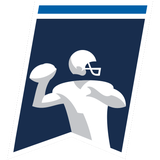
Get more from College Football Follow your favorites to get information about games, news and more



